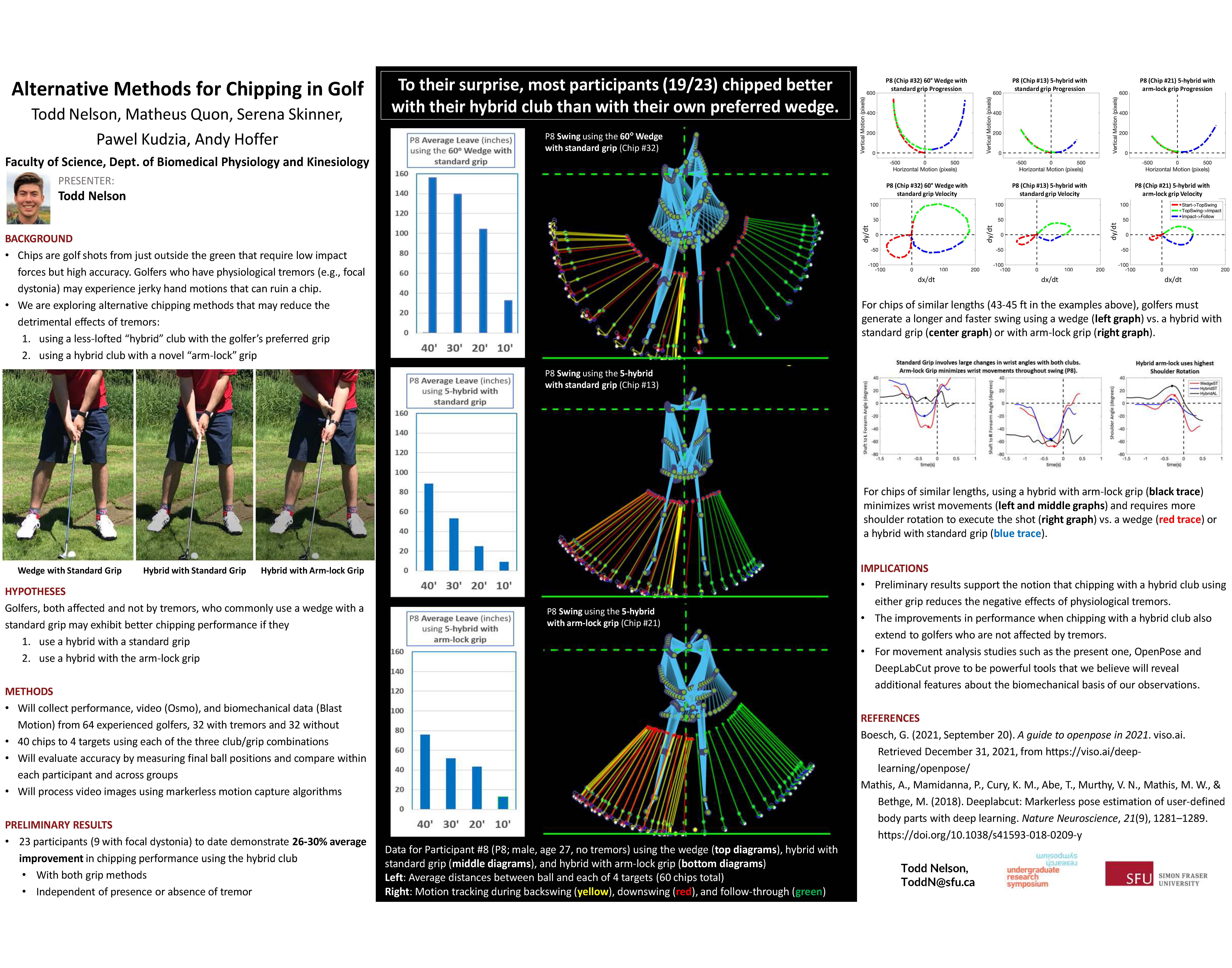Alternative Methods for Chipping in Golf
Main Article Content
Abstract
Chips are golf shots from outside the green, usually performed with a high-lofted club (a “wedge”), that require relatively low impact forces but high accuracy. Golfers who have physiological tremors such as focal dystonia may experience jerky hand motions that can ruin a chip. We propose two alternative chipping methods that may reduce the negative impact of tremors: using a less-lofted “hybrid” club with the golfer’s preferred grip and using a hybrid club with a novel arm-lock grip. Hybrid clubs make the ball land sooner and roll more, while the arm-lock grip reduces wrist movements and utilizes shoulder and upper arm muscles that are less affected by tremors. We hypothesize that these hybrid options, not normally considered by golfers, may improve the chipping performance of golfers affected by tremors as well as golfers not affected by tremors. To test our hypotheses, we will recruit 64 experienced golfers, 32 with tremors and 32 without. Within each group we aim to recruit eight participants in four sub-categories: young female (18-44); young male (18-44); senior female (45+); and senior male (45+). We will evaluate accuracy from measuring the final ball resting positions from 120 chips aimed at four standard targets. We will compare accuracy within each participant and across groups and determine whether differences emerge when using the wedge vs. hybrid and the two grip methods. Additionally, to elucidate the biomechanical basis of any performance differences, we will analyze swing kinematics data generated by a wireless motion capture sensor and computer vision tools.
Faculty Supervisor: Dr. Andy Hoffer, Biomedical Physiology and Kinesiology, Simon Fraser University
Research Team Members: Pawel Kudzia, Simon Fraser University
Article Details

This work is licensed under a Creative Commons Attribution-NonCommercial-NoDerivatives 4.0 International License.

